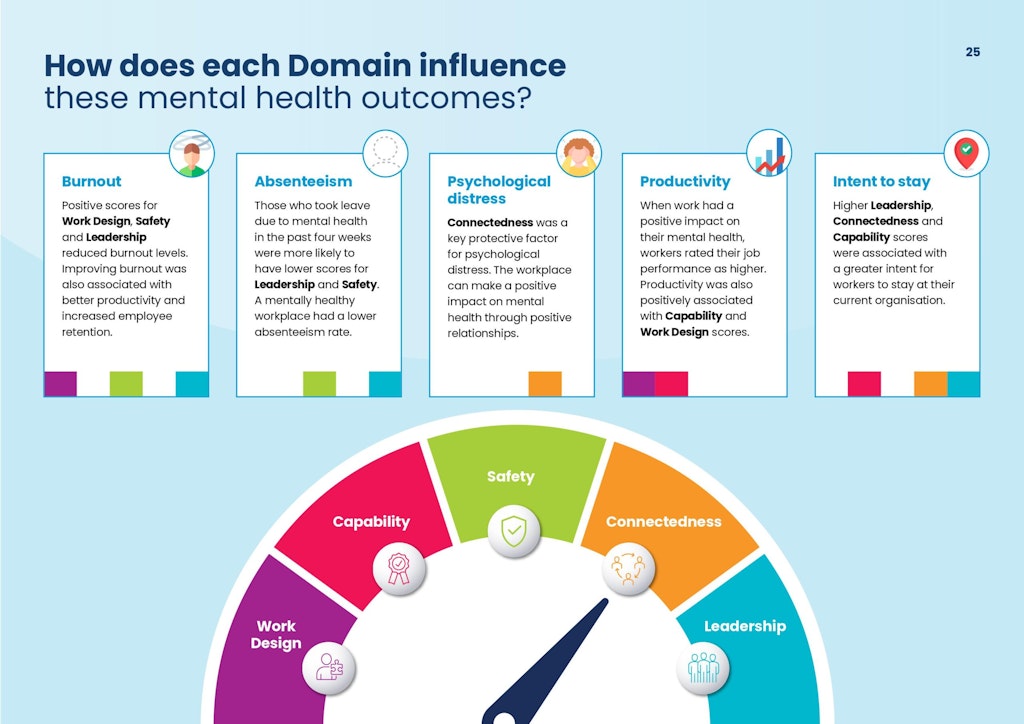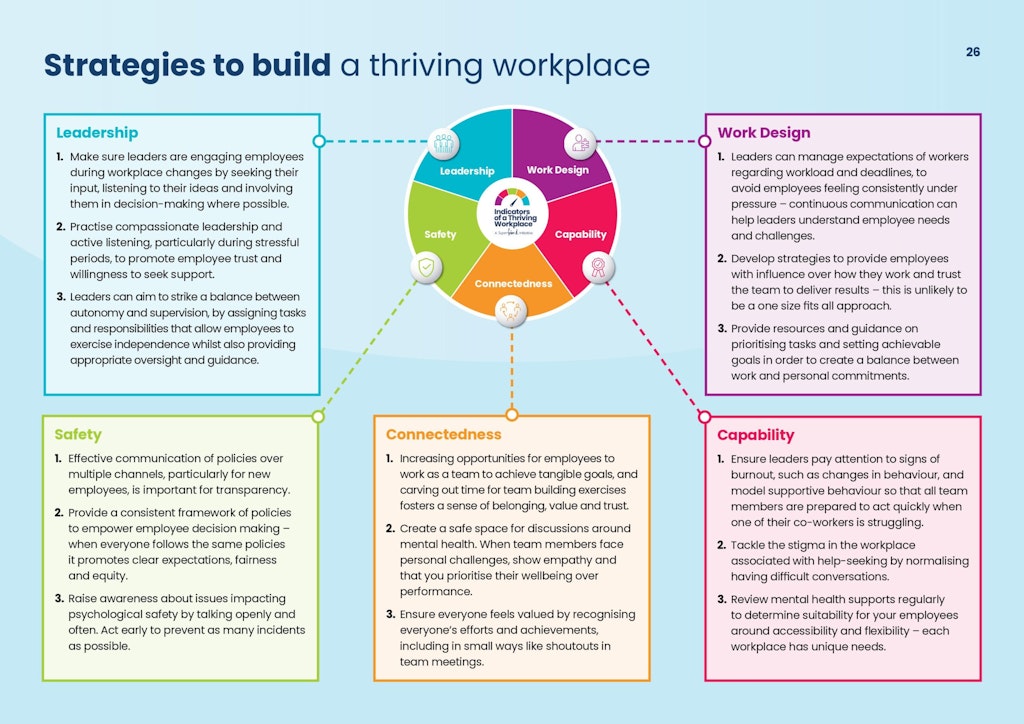Tips to help leaders build a thriving, mental health-friendly workplace
Last updated on 20 June 2024

Effective leadership is pivotal to creating and maintaining a workplace environment that prioritises the mental health of its staff. However, leaders have found themselves unexpectedly becoming accidental counsellors when staff come to them seeking mental health support, resulting in a strong feeling of being overwhelmed.
SuperFriend, a non-profit organisation that guides workplaces on their mental health journey through research, advocacy and direct support, published Indicators of a Thriving Workplace, a major study of workplace mental health.
The 2023 Key Insights report shed light on the connection between their five Domains of influence and psychosocial hazards across several industries including aged care (as part of Health Care and Social Assistance).
Dr Natalie Flatt, Chief Mental Health Advisor at SuperFriend, told hello leaders that without the appropriate experience or support systems, such as an Employee Assistance Program (EAP), leaders can struggle while searching for the best way to help their employees.
“Some leaders will feel like they’re in too deep. We want to ensure leaders have the skill set to guide employees to the appropriate systems and mental health support rather than having to take on those challenges entirely,” Dr Flatt told hello leaders.
“Leaders are a cultural architect so having a supportive and inclusive culture starts with the leaders. They have to make sure staff know where to access resources, how to understand signs and symptoms and to offer those check-in times to talk about how they’re feeling.”

Strategies to build a thriving workplace
SuperFriend’s 2023 Key Insights report looked at nine separate psychosocial hazards, such as relationships & fairness, traumatic events and workload. Aged care, as part of the Health Care and Social Assistance industry, scored below national standards in eight of nine categories.
Building on the strategies shared in Indicators of a Thriving Workplace, Dr Flatt took an optimistic approach to the scores, telling hello leaders there is an area of opportunity for addressing those psychosocial hazards.
Among the most pressing priorities is increased recognition and reward for staff.
“Recognition is something a leader can do quite well and it’s honing in on when they can highlight employee performance. There is evidence that recognition holds higher merit than some financial rewards, too,” she said.

Dr Flatt said objective observation is an important element of recognition and it could be as simple as saying ‘I noticed how you took on an extra shift and that put you under some additional strain. I appreciate your hard work and commitment’. Specific recognition reinforces positive behaviours and ensures they happen again, although you should never take advantage of employees who yes all the time.
“Being able to support individuals around burnout involves creating a more nurturing work environment that prioritises their well-being and their self-care and then encouraging a work-life balance,” added Dr Flatt.
“That can happen through a flexible work schedule and promoting breaks with an opportunity to go outside and experience calming environments. It’s amazing how much that can ignite a bit more energy and regain balance.”
Other positive steps to reduce burnout and promote positive mental health include setting realistic goals with employees, maintaining open communication and regularly checking in to discuss workloads and well-being.

“We’re looking at leaders to say they’re ready to have a conversation with staff because they’re concerned about their mental health. Start with objective observations such as ‘I noticed you may not be participating in our group discussions as much as you used to’,” explained Dr Flatt.
“Coming in with something quite concrete rather than an opinion can be helpful when talking to an employee as open-ended statements allow the recipient to ponder and then answer without feeling judged.”
Leading by example
Leaders who want to enhance their mental health awareness can do one simple thing: lead by example. It’s easy for mental health challenges to creep up on anyone, including managers and leaders, and being emotionally aware and actively listening to staff needs allows you to recognise signs sooner.
“It all comes down to self-awareness and leaders who have experience with mental health resources and are involved in training days and discussions will know it’s about being authentic and honest at the appropriate time,” said Dr Flatt.
“A lot of workplaces have the resources available and it might just require leaders stocktaking what resources are relevant, are they underutilised or what can be done to help staff access them.”
“It’s not always solving the problem. Sometimes it might be an employee who wants to be listened to and if the leader feels like action needs to be taken you can ask what can be done to help and gently guide them to the right professional support,” added Dr Flatt.
To access the 2023 Key Insights Report and to request a snapshot of the Health Care and Social Assistance industry visit SuperFriend’s website.